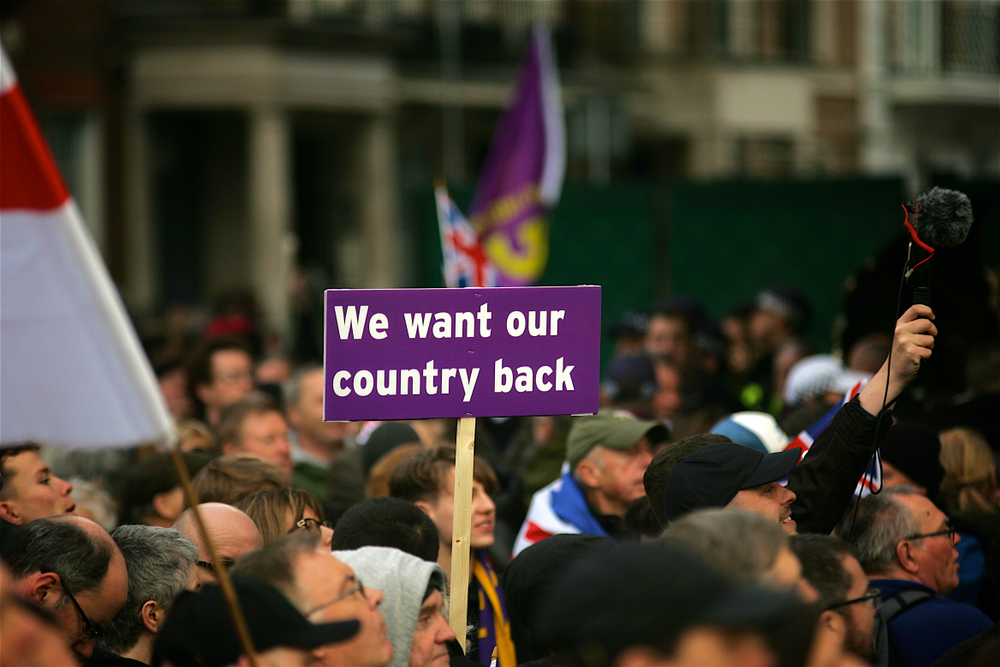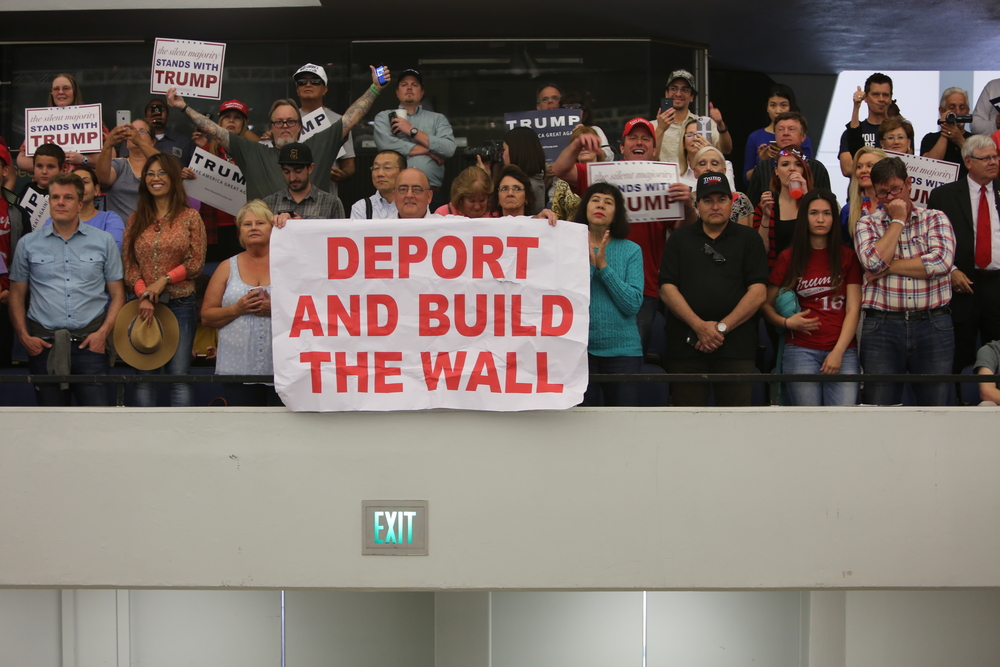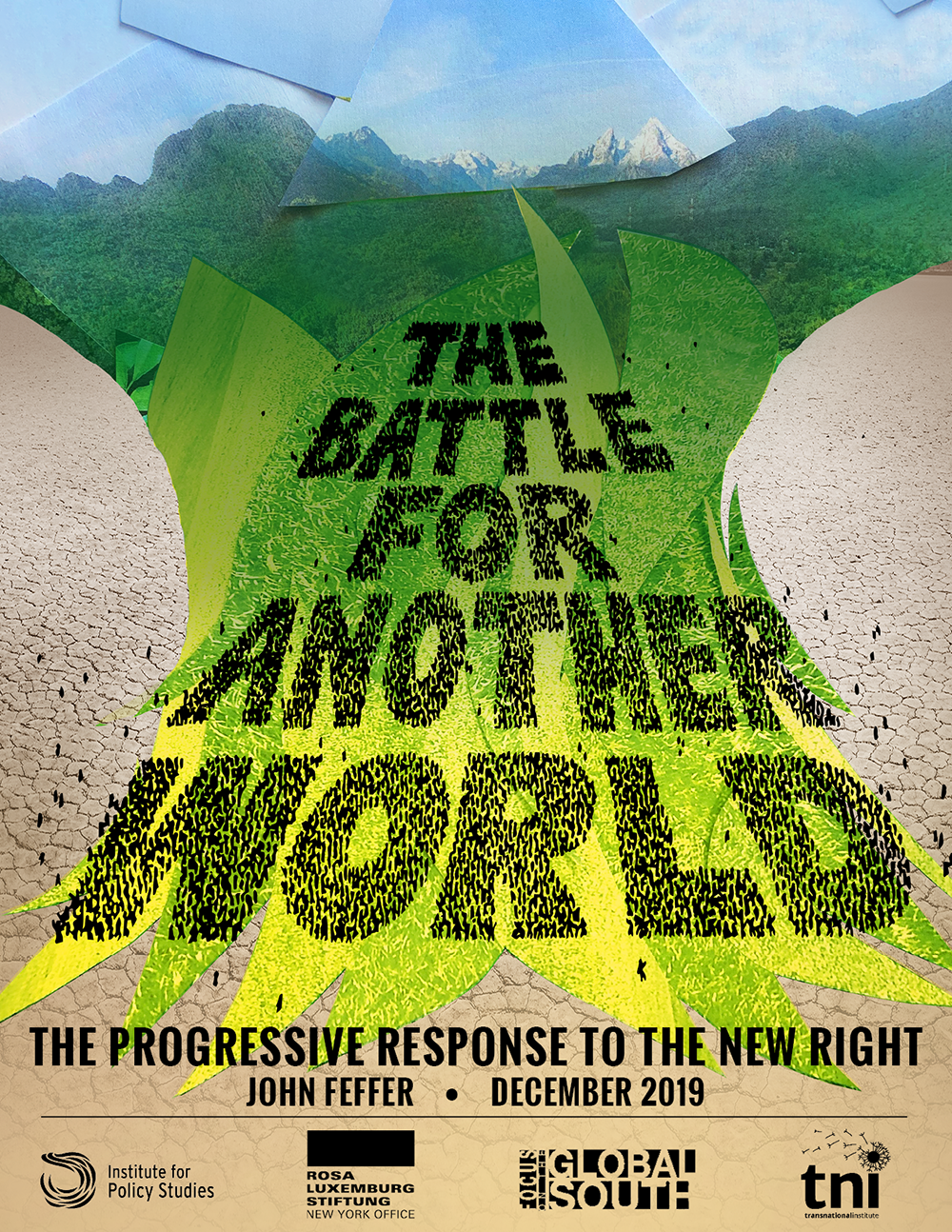The Battle for a New World:
The Progressive Response to the New Right
John Feffer
Introduction:
The far right is increasingly active globally—at the level of governments, through civil society, and in the digital sphere. Their political parties are cooperating across borders, their anti- democratic actions are undermining the rule of law, their attacks on “globalists” are eroding the efficacy of international institutions, and their racist memes are spreading throughout culture.
According to the 80 academics, researchers, and activists interviewed in this report, this threat to democracy and internationalism is urgent.
Yet, the global response to this organizing on the far right has been muted. Those who oppose the far right have been focusing their efforts largely at a local and national level. Meanwhile, global threats such as climate change, a widening gap between rich and poor, and entrenched militarism require more, not less, international cooperation. A refocus on local and national struggles at the expense of organizing at the global level provides the far right with an opportunity to rewrite the rules of the international order along illiberal lines.
Key Findings:
- An international reaction to economic globalization has been key to the right’s success. Unlike the internationalist left, the new right has been more effective at channeling discontent into political success at a national level.
- Key to the new right’s success has been a story that can be applied effectively across borders: the “great replacement.” The argument that minorities, with help from “globalists,” will usurp the privileges of the dominant group has proven appealing to both an extremist fringe and more mainstream conservatives.
- The new right has achieved political success with its attacks on globalization in a way the left failed to do. But the new right has a key failing: It has nothing to say about an ever-worsening climate crisis.
- The 80 international experts overwhelmingly identified the school climate strikes as the present moment’s most promising international action and the Green New Deal as a framework that could defeat the right’s global narrative.
- A Global Green New Deal wouldn’t just address the environmental crisis. By creating enormous numbers of well-paying jobs, it would also speak to those left behind by economic globalization. Such a narrative would undermine the new right’s anti-globalist appeals while offering up a positive vision to rally around within and across borders.
It’s a misconception that the far right is an exclusively nationalist movement.
Though they’ve gained popularity by promising to make their own countries “great again,” they act as internationalists. Autocrats share best practices and funding streams across borders. They cooperate with a well-funded network of right-wing civil society organizations and corporations campaigning around the world to roll back civil and human rights.
Actors like Steve Bannon are attempting to stitch together Trump-like coalitions in Belgium, France, Sweden, Italy, and Hungary. The far-right embrace of climate denial, for example gets a big global lift from the likes of ExxonMobil and the Koch brothers. The World Congress of Families, founded in 1997, promotes its conservative cultural agenda through regular global gatherings.


The right has succeeded in part by developing a simple transnational narrative that can be repeated across borders: the “great replacement” of white people by non-white people, or of a dominant culture by a minority culture. Introduced by the French writer Renaud Camus in 2010, the “great replacement” has been taken up by white nationalists across Europe and North America and inspired the mass shootings in Christchurch, New Zealand in March 2019 and El Paso, Texas in August 2019.
Anti-immigrant and namely anti-Muslim activism has served as a major networking opportunity for far-right civil society organizations pushing this narrative. Organizations like the Center for Immigration Studies and the Federation for American Immigration Reform have coordinated across the Atlantic to curb immigration and further white supremicist rhetoric.
The replacement theory has stirred anti-immigrant antipathy in the U.S. and Europe. A push to stop all undocumented migration has also created both a “Fortress America” and a “Fortress Europe” mentality. A kind of “Fortress Brazil” has also emerged, with Bolsonaro portraying Venezuelan migrants as a threat. Similarly, far-right Hindu nationalists aim to create a Fortress India that expels Muslims.

Far right political actors took advantage of the vacuum created by the financial crisis. They harvested the arguments and the resistance organized by movements and unions around the world against corporate globalization, but they changed the enemy. Instead of global capitalism and neoliberalism and corporations, the enemy became the “globalists” — the ones who put free trade before national interests and talked about national interest in the language of justice, equality, and human rights as opposed to borders and sovereignty.
At the root of this transformation has been the right wing’s capacity to harness people’s sense of alienation. This has caused a shift in working-class loyalties. But the alienation also extends beyond the have-nots to include the have-somes. For Donald Trump, existential anxiety about potential loss of status was a greater predictor of support in the 2016 elections than actual economic hardship.
Meanwhile, the institutional powerbase that once sustained the left—union membership—is dwindling. In the U.S., union membership has gone from 34.2 percent to 11 percent—only 6 percent in the private sector. In the Organization of Economic Cooperation and Development—36 of the wealthiest countries in the world—trade union membership has fallen by half since 1985, from 30 percent to 16 percent.
While the right was able to capitalize on the global financial crisis, it has no effective response to the global climate crisis other than to pretend that it doesn’t exist.
This presents a major opening for the left. When those 80 global activists and thinkers were asked what international campaign made them most hopeful, the #FridaysforFuture school strikes that 16-year-old Greta Thunberg began in September 2018 headed their lists.
Experts pointed to the Green New Deal as a framework that could rival the great replacement. The Green New Deal isn’t just a uniting force for those who care about climate—it involves the infrastructure financing, job retraining, and targeted subsidies for green industries that the left has championed for some time as a way to win back those disillusioned by neoliberalism.
The Green New Deal is not an American invention and it already has a transnational following. Yannis Varafoukis, the former Greek finance minister, calls the Green New Deal the “glue and cement” that can hold together a European alliance of greens, leftists, and liberals. In Asia, a GND could push China’s Belt and Road Initiative toward greater sustainability. For Africa, a GND would provide an opportunity for countries to leapfrog over existing technologies and achieve parity with the Global North at far less cost to the environment.
Essentially, the climate crisis could do for the left what the financial crisis did for the right.
Help Us Stop the Far Right: Sign Up for Updates

Experts around the globe are available for interviews. Contact Robert Alvarez for more information.
Download our Press Release [PDF]
Download our Press Brief [PDF]
Media Contacts:
Robert Alvarez
robert@ips-dc.org
202-787-5205
